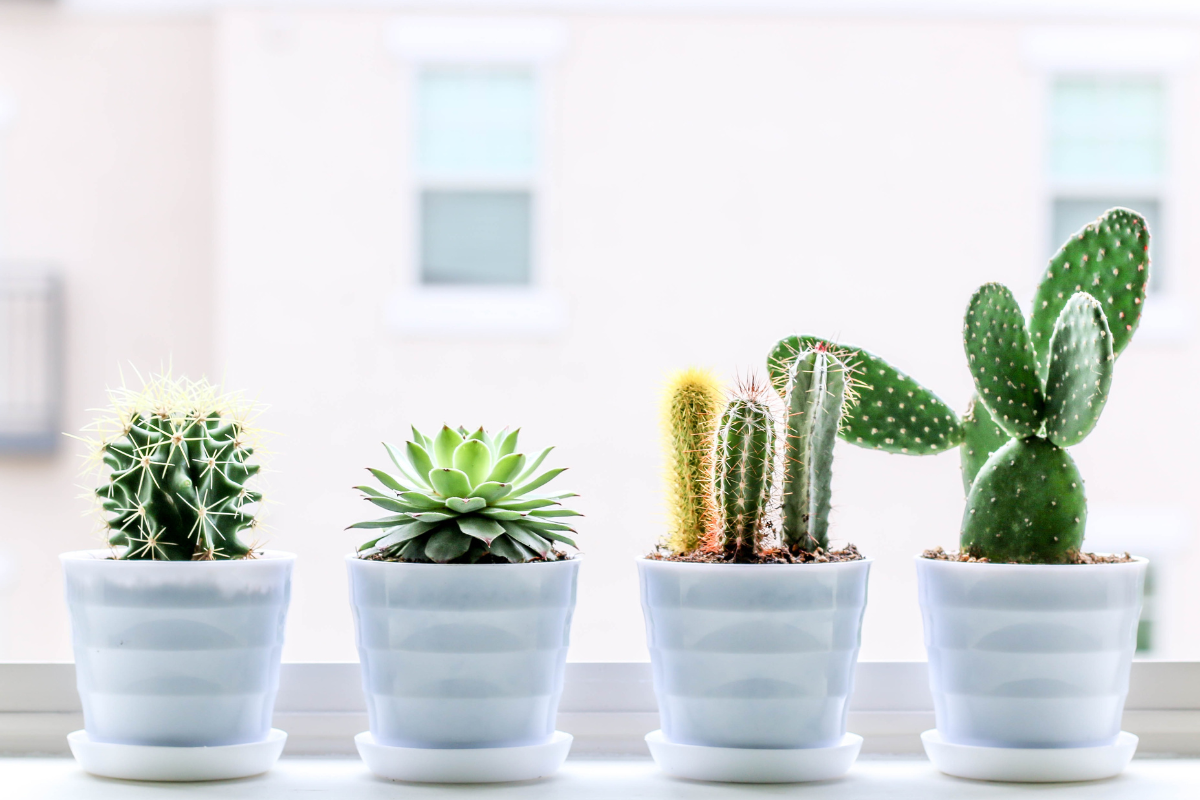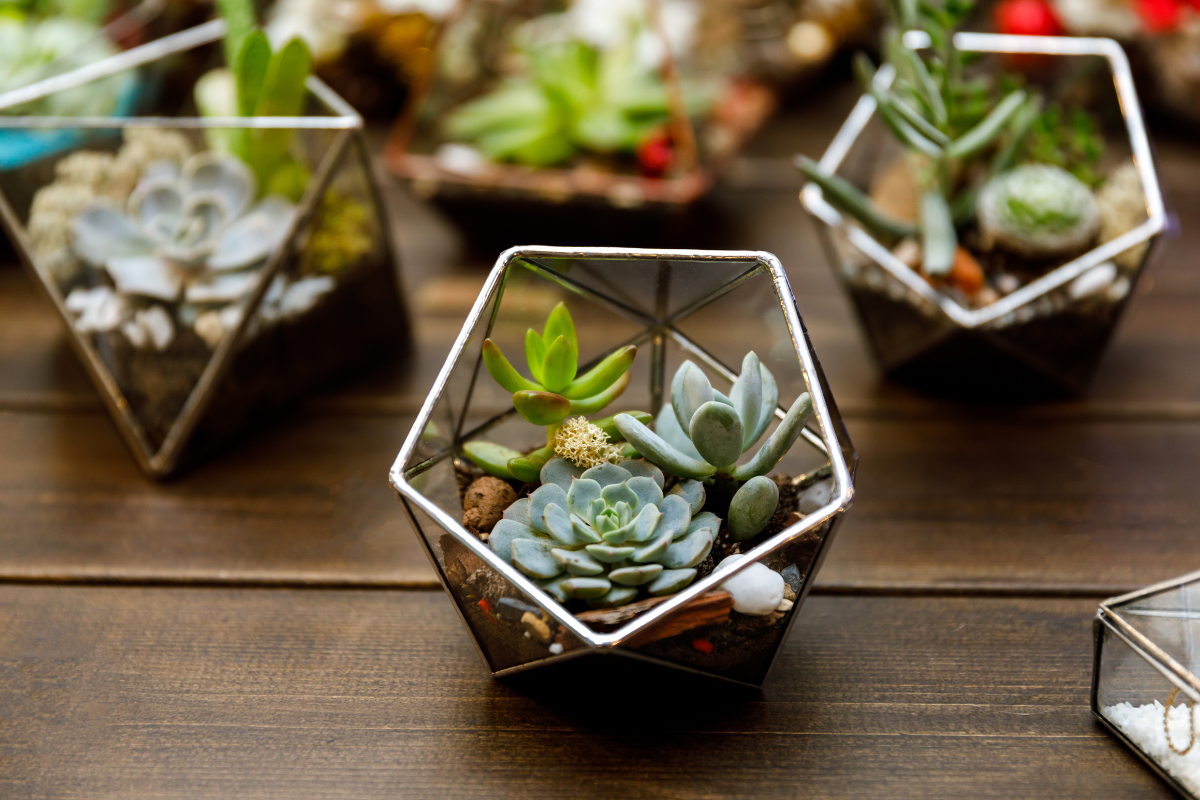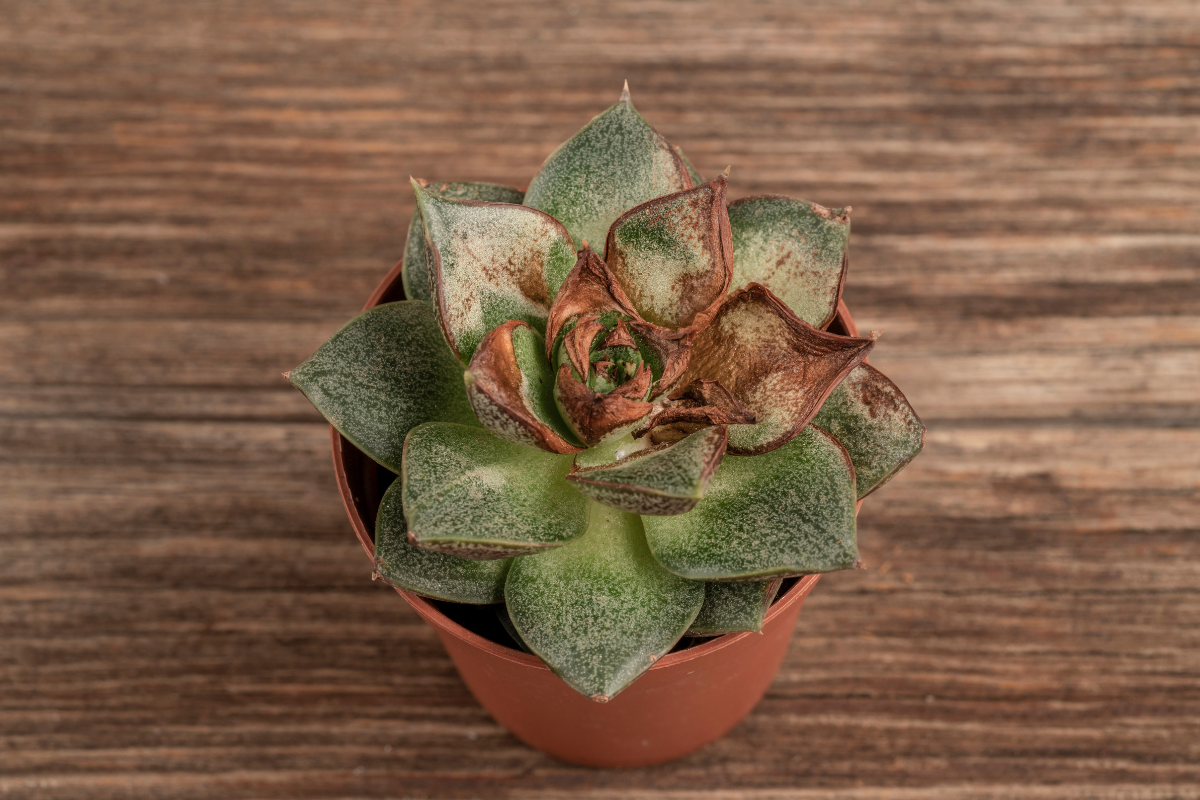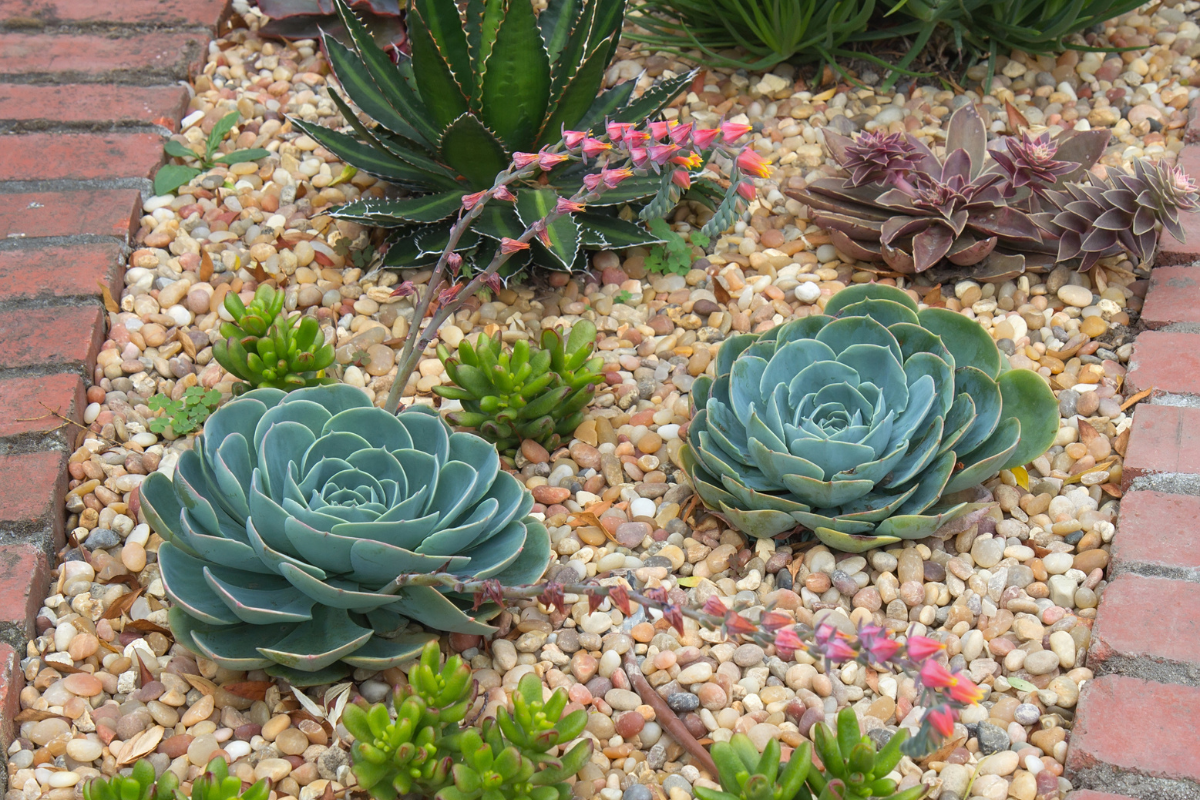Are you a succulent lover struggling to keep your plants healthy and happy?
Whether you’re new to the world of succulents or have been growing them for years, it’s not uncommon to encounter problems that can harm their growth and overall health.
From improper watering techniques to pests and diseases, there are many issues that can affect your beloved plants.
But don’t worry – in this post, we’ll be identifying 13 common succulent problems and providing helpful tips on how to fix them. So grab your gardening gloves and let’s get started!
Table of Contents
Common Succulent Problems
If you’re new to succulents, it’s normal to feel a little overwhelmed when trying to identify and fix common problems. Here are some of the most common succulent problems, along with tips on how to fix them
i) Too Much Sun Exposure
If your succulent is getting too much sun exposure, you may notice the leaves start to turn yellow or brown. The plant may also start to wilt and look overall unhealthy.
Too much sun can damage the plant and even cause it to die.

If you think your succulent is getting too much sun, try moving it to a shady spot or providing it with some artificial shade.
You can also try misting the leaves with water to help cool them down. If the problem persists, you may need to consider moving your plant to a location that gets less sunlight.
ii) Not Enough Sun Exposure
If your succulent is not getting enough sun exposure, it will start to stretch out and become leggy. This is because the plant is trying to reach for the light, and as a result, the stems become elongated and the leaves spaced further apart.
To fix this problem, move your plant to an area that receives more sunlight. If you can’t provide more sunlight, you can try using grow lights.
Be sure to position the grow lights so that they are close to the succulent (but not touching it), and provide at least 14 hours of light per day.
iii) Overwatering
While it may seem like an easy mistake to make, overwatering is actually one of the most common problems people have with their succulents. The good news is that it is fixable!
There are a few tell-tale signs that your succulent has been overwatered: leaves that are swollen or soft to the touch, leaves that are starting to yellow or brown, and/or root rot. If you see any of these signs, it’s important to take action immediately.
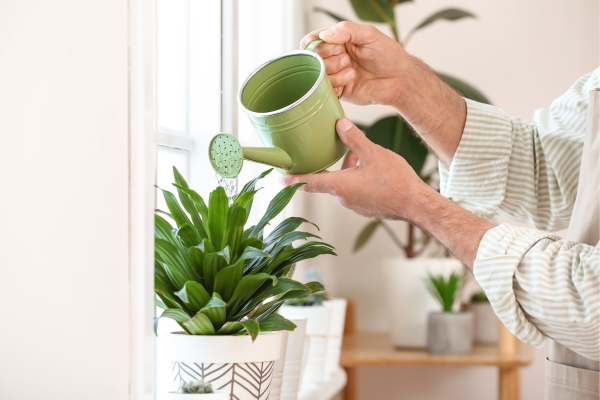
The first step is to stop watering your plant altogether. Allow the soil to dry out completely before giving your plant another drink.
In the meantime, check the drainage of your pot – if water isn’t draining properly, that could be part of the problem. (If you’re using a pot without a drainage hole, consider repotting into one that does.)
Once you’ve fixed the drainage issue and allowed the soil to dry out completely, you can start watering again – but be sure to do so sparingly!
Water only when the soil is dry to the touch, and be sure not to overdo it. A little bit of water goes a long way with succulents.
With some time and care, your overwatered succulent will be back to its old self in no time!
iv) Underwatering
If your succulents are wilting, have dry, wrinkled leaves, or are otherwise looking unhealthy, it’s possible that they’re not getting enough water.
Underwatered succulents will often have dry soil, and their leaves may feel soft or papery to the touch.
If you think your succulent is underwatered, give it a good soaking (making sure the water drains out of the pot), and then allow it to dry out completely before watering again.
Be careful not to overwater, as this can also be harmful to your succulent.
v) Root Rot
Root rot is a common succulent problem that can be caused by overwatering or poor drainage. Root rot can kill your succulent, so it’s important to identify the problem early and take action to fix it.
If you suspect your succulent has root rot, take a close look at the roots. Healthy roots are white or tan, while roots affected by root rot are dark brown or black. If you see any darkening of the roots, it’s time to take action.
To fix root rot, you’ll need to re-pot your succulent in fresh soil with good drainage. Be sure to water your succulent carefully, allowing the soil to dry out completely between waterings.
vi) Fungal Diseases
Fungal diseases are one of the most common problems that succulent growers face. These diseases can be caused by a number of different fungi, and they can affect any part of the plant.
The most common symptoms of a fungal disease are yellow or brown spots on the leaves, and sometimes the stem.
The spots may be dry and crusty, or they may be moist and mushy. If you see these symptoms in your plant, it’s important to take action immediately.
There are a few different ways to treat fungal diseases. One is to remove the affected parts of the plant. This can be tricky with succulents because they often have very delicate leaves.
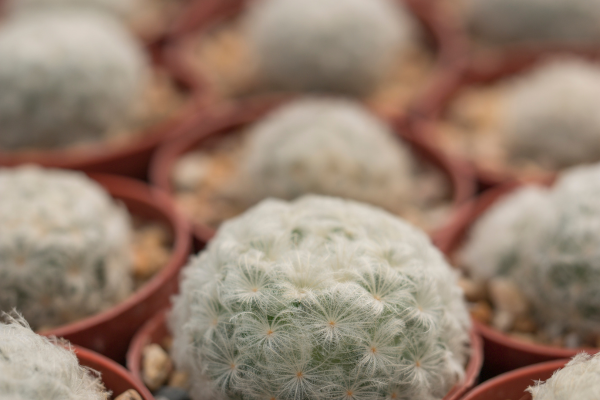
If you’re not careful, you can end up removing more of the plant than you intended. Another option is to treat the plant with a fungicide.
There are many different fungicides available, so be sure to read the label carefully and choose one that is specifically for use on succulents.
If you think your plant might have a fungal disease, it’s important to act quickly. These diseases can spread quickly and kill your plant if left untreated.
vii) Pests
Pests are one of the most common problems that succulent growers face. These tiny creatures can wreak havoc on your plants, causing them to become sick or even die.
The good news is that there are a few simple steps you can take to get rid of pests and keep them from coming back.
The first step is to identify what kind of pest you’re dealing with. The most common succulent pests are mealybugs, aphids, and scale insects. Each of these pests looks different and requires a different treatment.
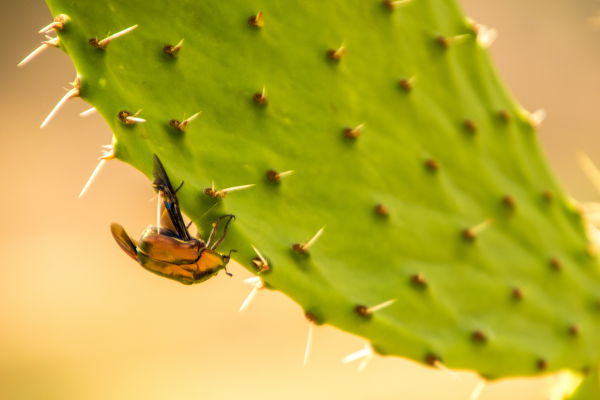
Once you’ve identified the pest, it’s time to take action. There are a number of products on the market that will kill pests without harming your plants.
If you have a serious infestation, you may need to treat your plants with a systemic insecticide. This type of pesticide is absorbed by the plant and kills pests that feed on it.
Systemic insecticides are generally safe for humans and pets, but they can be harmful to beneficial insects like bees.
You should also clean up any debris around your plants that could harbor pests (like fallen leaves or dead insects).
viii) Nutrient Deficiencies
A lot of succulent problems can be traced back to nutrient deficiencies. While these plants are generally pretty hardy, they still need the proper nutrients to thrive.
Without them, they can start to experience a variety of issues.
One of the most common problems is yellowing leaves. This is usually a sign that the plant is lacking in nitrogen. Other symptoms include stunted growth and pale leaves.
If you suspect your plant is nitrogen-deficient, you can try fertilizing it with a nitrogen-rich fertilizer.
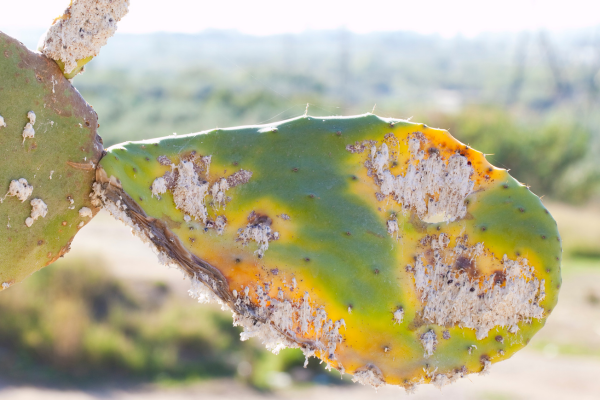
Potassium deficiency can also cause yellowing leaves, as well as brown or black spots on the leaves. The plant may also produce smaller, less vibrant flowers. A potassium-rich fertilizer can help correct this problem.
If your succulent has red or purple leaves, it may be lacking in phosphorus. This nutrient is important for healthy root growth, so without it, the plant may not be able to absorb enough water and nutrients from the soil. A phosphorus-rich fertilizer can help remedy this issue.
If your succulent’s leaves are looking pale or yellow and its stems are weak or spindly, it could be lacking in iron.
This micronutrient is essential for photosynthesis and healthy growth overall. An iron supplement can help correct an iron deficiency.
Find what exact nutrients your succulent is lacking and supplement them with that.
ix) Improper Fertilization
If your succulent isn’t getting enough nutrients, it may start to show signs of improper fertilization. Symptoms include weak or stunted growth, yellowing leaves, and brown spots on the leaves.
If you think your succulent isn’t getting enough fertilizer, you can try feeding it with a balanced fertilizer that’s meant for cacti and succulents.
Be sure to follow the instructions on the package, and don’t over-fertilize, as this can burn the roots of your plant.
x) Poor Drainage
One of the most common succulent problems is poor drainage. This can lead to a whole host of issues, including root rot, fungal diseases, and even death.
There are a few things you can do to fix poor drainage. First, make sure you’re using the right potting mix.
Succulents need a well-draining mix that contains plenty of organic matter. Second, don’t water your succulents too often.
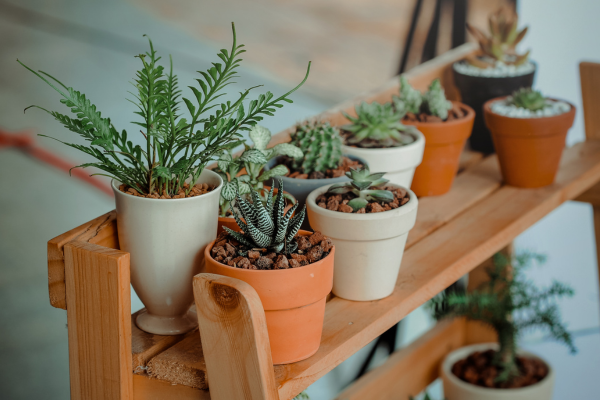
Allow the soil to dry out completely between watering sessions. Make sure your pots have drainage holes in the bottom so excess water can escape.
If you suspect your succulent has root rot, it’s important to take action immediately. Remove the plant from its pot and inspect the roots.
If they’re brown or mushy, they’re probably rotting. You can try to save the plant by trimming away the affected roots and replanting them in a fresh potting mix.
However, if the damage is too severe, it’s best to start over with a new plant.
xi) Mealy Bugs
Mealybugs are small, wingless insects that are covered in a white, waxy powder. They feed on plant sap, which can cause stunted growth, yellowing leaves, and leaf drop.
Mealybugs can also spread diseases from one plant to another.
To get rid of mealybugs, start by spraying your plants with water to dislodge them. Then, use a cotton swab or Q-tip dipped in rubbing alcohol to apply directly to the bugs.
You can also try using an insecticidal soap or neem oil solution. Be sure to follow the instructions on the label carefully.
xii) Poor Soil Quality
One of the most common succulent problems is poor soil quality. This can be caused by a number of factors, including over-watering, under-watering, and using the wrong type of soil.
If your succulents are growing in poor soil, they may start to experience a number of problems, including yellowing leaves, stunted growth, and root rot.
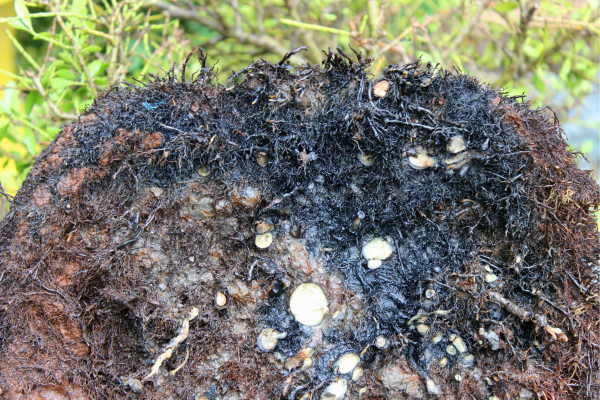
To fix this problem, you’ll need to improve the quality of your soil.
There are a few ways to do this. First, you can add some organic matter to your soil, such as compost or manure.
This will help to improve the drainage and aeration of your soil. Second, you can mix in some sand or grit to improve the drainage. Third, you can add some perlite or vermiculite to improve aeration.
Once you’ve improved the quality of your soil, be sure to water your succulents more carefully. Over-watering is one of the main causes of poor soil quality, so it’s important to avoid this mistake in the future.
xiii) Small plant size
If you notice that your succulent is not growing as large as it should, there may be a few reasons for this. One of the most common causes of small plant size in succulents is lack of sunlight. Succulents need plenty of bright light to grow and thrive, so if they are not getting enough light, they may become stunted.
Another cause of small plant size could be overcrowding. If you have several different types of succulents planted together in one pot or container, they may be competing for space and resources which can limit their growth potential.
It’s also important to make sure your succulent is getting the right nutrients it needs to grow properly. Fertilizing your plants with a balanced fertilizer every few months can help promote healthy growth and prevent stunting.
Keeping your succulent in optimal temperature conditions is crucial for its development.
Preventing Future Issues with Succulents
To avoid having succulent problems in the future, here are a few tips:
- Choose the right succulent for your location. Consider the light, temperature, and humidity conditions where you will be growing your plant.
- Make sure your pot has drainage holes. Succulents need well-drained soil to thrive.
- Water your succulent regularly, but don’t overwater it. Allow the soil to dry out between watering.
- Fertilize your plant every few months to give it a boost of nutrients.
By following these simple tips, you can help prevent common succulent problems and ensure that your plant stays healthy and happy for years to come!
Conclusion
Succulents are beautiful, low-maintenance plants that can bring life to any space. However, they are still living organisms and can experience common problems like other plants.
We hope this article has helped you identify the common succulent issues your plant may be facing so that you can take the necessary steps to address them and keep your plant healthy and happy!
